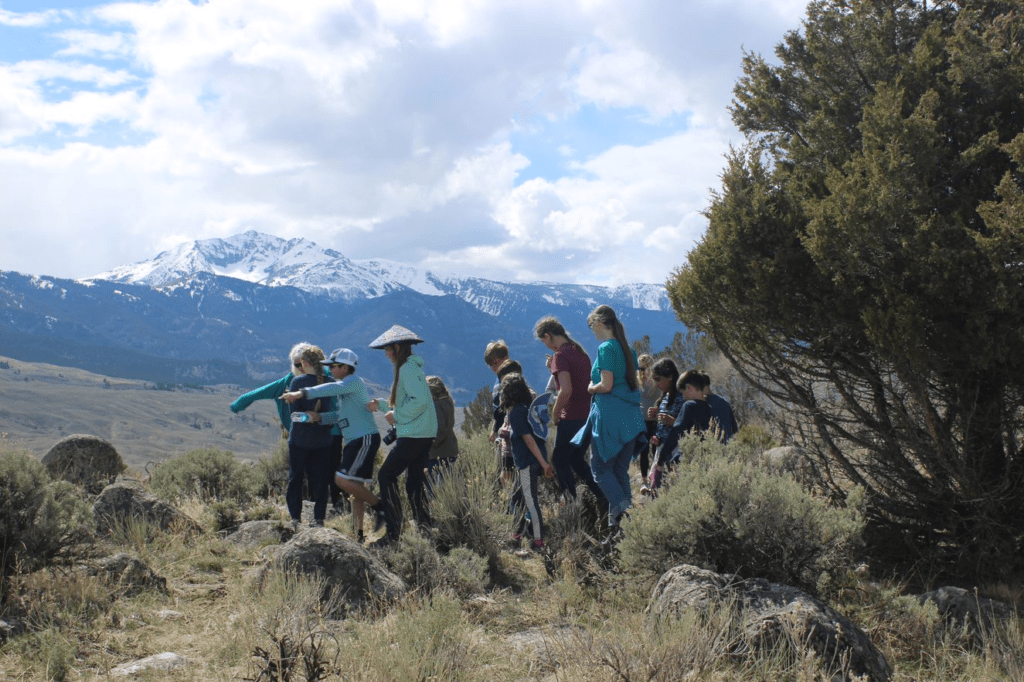This student essay was included in the feature story “Spokane Students Write From the Wilds of Yellowstone” by Derrick Knowles in the September-October 2021 issue.
Yellowstone Wolves
By Vansh Amin
Wolves are a very crucial part of Yellowstone. Did you know that at one point in Yellowstone’s history all the wolves were extinct!?!? Most people would think that wouldn’t affect anything, but it had a huge impact on the Yellowstone ecosystem. Since the wolves weren’t there, many of the hoofed mammals, like deer and elk, overpopulated. This was the reason people killed the wolves, because they wanted more deer and elk. But it was very bad because the deer and elk eat trees, especially deciduous trees. This destroys riparian habitat for animals like birds, beavers and otters who can’t hide behind trees while resting, drinking or raising their young. Also, the deer and elk would eat all of the food.
The Yellowstone biologists decided to reintroduce wolves in 1995. They couldn’t just bring in some new wolves from anywhere. After 80 years of wolves being gone, they had to find wolves that were used to the habitat and prey found in Yellowstone. That is when they got the idea to bring in wolves from Canada just north of the Montana border where they also hunt elk and bison. The wolves have repopulated Yellowstone and have changed the environment in a good way. Riparian plants and trees like aspen grew back, which brought back the beaver. This benefitted the whole wetland ecosystem and all the species that need that habitat. This is why wolves are a keystone species.
The average wolf pack size is about 10 wolves. They inhabit most of the park. When they are active the most is at dawn and dusk. Many other animals benefit from wolf kills. For example, when wolves kill an elk, ravens and magpies arrive pretty much instantaneously. Coyotes arrive soon after, waiting nearby until the wolves leave. Bears often attempt to chase the wolves away, and are often successful. Another benefit is that the wolves are also keeping the elk population in balance, otherwise the elk would overpopulate and it would mess up the food chain. Also the ravens, magpies, vultures and other scavengers wouldn’t have as many sources of food, and then they would starve and food chain would be even more out of order. Wolves help keep wildlife populations healthy just by hunting and surviving.
Editor’s Note: These student essays were printed as they were provided by Pioneer School and were unedited by Out There. To learn more about the school, visit Pioneerschool.com.



Learning about thermal features, wolves, and more during an Expedition Yellowstone trip. // Photo courtesy Pioneer School.
Every other year, 4th and 5th grade students from Pioneer School participate in Expedition Yellowstone, a National Park Service program where school groups get to choose a theme, such as history, ecology, and wildlife for a hands-on learning expedition. Pioneer School is a K-5 accredited, non-profit school for gifted and highly-capable learners in Spokane Valley.













